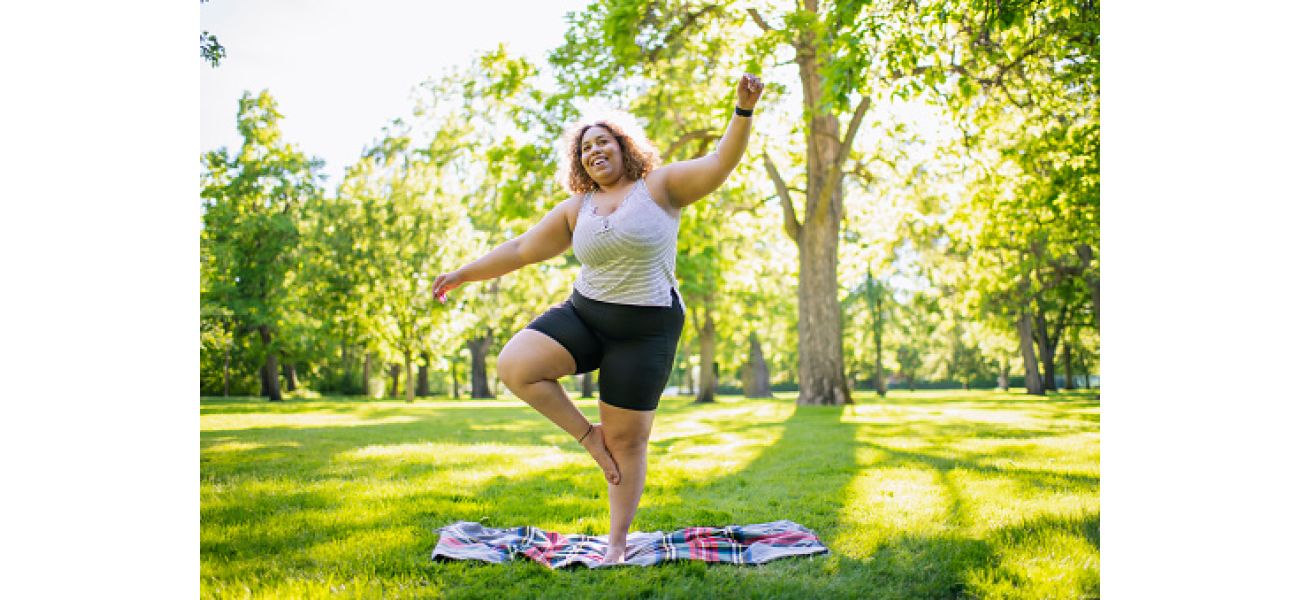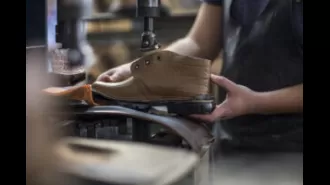Stand on one leg for as long as your age suggests.
November 28th 2024.

Have you ever wondered how long you can stand on one leg? It may seem like a simple task, but recent research suggests it can actually reveal a lot about your health. As we age, our bodies go through physical changes, from our skin and hair to our ability to digest certain foods. And now, according to a new study, even our balance and strength can be affected.
The study, published in the journal PLoS One, found that as we get older, our ability to stand on one leg for an extended period of time decreases. In fact, after the age of 65, there is a sharp decline as older participants struggled to hold their stance for more than two seconds. The researchers noted that this is one of the first physical abilities to decline with age.
Not only is standing on one leg a good indicator of physical health, but it can also reveal other important factors. The authors of the study wrote, "These findings suggest that the duration of unipedal stance [standing on one leg] can serve as a reliable and gender-independent measure of neuromuscular aging for both elderly male and female subjects." In other words, it can be a useful tool in identifying potential health concerns such as frailty, independence, and fall risk.
Thankfully, the NHS has provided a guideline for how long we should be able to stand on one leg based on our age. They call it the "flamingo challenge" and it goes like this: stand on one leg without any support, keep your eyes open and your hands on your hips, and time starts when your foot leaves the ground and stops when you put it back down.
For those aged 18-39, the expected time is 43 seconds. This may seem like a long time, but it's a good benchmark for measuring balance and overall fitness. Selina Lim, Divisional Director for Integrated Pathways at the NHS East Suffolk and North Essex NHS Foundation Trust, explains, "We know that people who struggle to balance for the expected amount of time are at a higher risk of developing ill-health as they age. By taking part in the 'flamingo challenge,' people can quickly and easily assess for themselves whether they are at risk."
As we get older, the time we should be able to maintain the pose decreases. For those aged 40-49, it's 40 seconds, 37 seconds for those aged 50-59, and 30 seconds for those aged 60-69. According to the British Journal of Sports Medicine, the inability to stand on one leg for 10 seconds in mid to later life is linked to a near doubling in the risk of death from any cause within the next 10 years. It may seem like a small task, but it can have a big impact on our overall health.
Debbie Dyer, Clinical Lead for Ageing Well and Anticipatory Care at the North East Essex Alliance, emphasizes the importance of physical activity as we age. She says, "Moving our bodies more day-to-day brings immediate benefit, too. Exercise is brilliant for mental health and is a great way of meeting new people in your community. The fitter and healthier you are, the better your mental wellbeing, and the longer you will retain your agility, strength, and balance into later life."
For those aged 70-79, the expected time is around 18-19 seconds, and for those over 80, it's a little over 5 seconds. It may not seem like a long time, but as we age, even a few seconds can make a difference. The NHS recommends not trying to maintain the pose for longer than a minute, as it can put unnecessary strain on the body.
So, next time someone asks you how long you can stand on one leg, don't be afraid to show off your skills. And if you find yourself struggling, it may be a good idea to incorporate some balance and strength exercises into your daily routine. After all, our ability to stand on one leg may seem like a small thing, but it can reveal a lot about our overall health and wellbeing.
The study, published in the journal PLoS One, found that as we get older, our ability to stand on one leg for an extended period of time decreases. In fact, after the age of 65, there is a sharp decline as older participants struggled to hold their stance for more than two seconds. The researchers noted that this is one of the first physical abilities to decline with age.
Not only is standing on one leg a good indicator of physical health, but it can also reveal other important factors. The authors of the study wrote, "These findings suggest that the duration of unipedal stance [standing on one leg] can serve as a reliable and gender-independent measure of neuromuscular aging for both elderly male and female subjects." In other words, it can be a useful tool in identifying potential health concerns such as frailty, independence, and fall risk.
Thankfully, the NHS has provided a guideline for how long we should be able to stand on one leg based on our age. They call it the "flamingo challenge" and it goes like this: stand on one leg without any support, keep your eyes open and your hands on your hips, and time starts when your foot leaves the ground and stops when you put it back down.
For those aged 18-39, the expected time is 43 seconds. This may seem like a long time, but it's a good benchmark for measuring balance and overall fitness. Selina Lim, Divisional Director for Integrated Pathways at the NHS East Suffolk and North Essex NHS Foundation Trust, explains, "We know that people who struggle to balance for the expected amount of time are at a higher risk of developing ill-health as they age. By taking part in the 'flamingo challenge,' people can quickly and easily assess for themselves whether they are at risk."
As we get older, the time we should be able to maintain the pose decreases. For those aged 40-49, it's 40 seconds, 37 seconds for those aged 50-59, and 30 seconds for those aged 60-69. According to the British Journal of Sports Medicine, the inability to stand on one leg for 10 seconds in mid to later life is linked to a near doubling in the risk of death from any cause within the next 10 years. It may seem like a small task, but it can have a big impact on our overall health.
Debbie Dyer, Clinical Lead for Ageing Well and Anticipatory Care at the North East Essex Alliance, emphasizes the importance of physical activity as we age. She says, "Moving our bodies more day-to-day brings immediate benefit, too. Exercise is brilliant for mental health and is a great way of meeting new people in your community. The fitter and healthier you are, the better your mental wellbeing, and the longer you will retain your agility, strength, and balance into later life."
For those aged 70-79, the expected time is around 18-19 seconds, and for those over 80, it's a little over 5 seconds. It may not seem like a long time, but as we age, even a few seconds can make a difference. The NHS recommends not trying to maintain the pose for longer than a minute, as it can put unnecessary strain on the body.
So, next time someone asks you how long you can stand on one leg, don't be afraid to show off your skills. And if you find yourself struggling, it may be a good idea to incorporate some balance and strength exercises into your daily routine. After all, our ability to stand on one leg may seem like a small thing, but it can reveal a lot about our overall health and wellbeing.
[This article has been trending online recently and has been generated with AI. Your feed is customized.]
[Generative AI is experimental.]
0
0
Submit Comment





